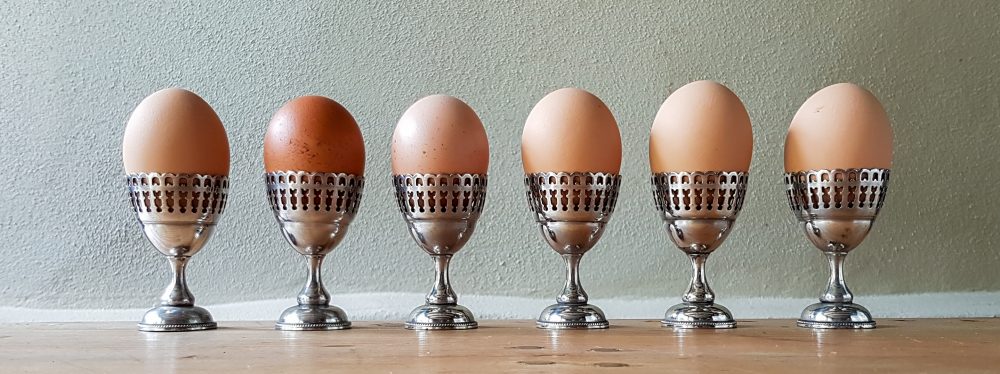The other day we snatched victory from the jaws of defeat – but it could so easily have gone the other way.
Rummaging in the depths of our freezer for a piece of lamb, I pulled out our entire stock of pork – and then forgot to put it back.
By the time I realised what I’d done, I had inadvertently defrosted a rolled leg of rare breed pork (sob), about a dozen pigs’ cheeks and a huge slab of belly pork, all lovingly produced by our friends Karon and Simon at the Stackyard Nursery in Mendlesham in Suffolk.
A bit of a panic ensued as even people as greedy as we are couldn’t eat that much pork before it spoiled. Many cookery books were consulted.
What we did in the end was make industrial quantities of vindaloo, a rather good daube (more on those another time) and lots and lots of sausages.
We have made sausages before but because we have such good local producers we don’t usually bother. So we scrabbled around for a recipe and decided to make Kentish Sausage-Meat from Eliza Acton’s “Modern Cookery for Private Families” circa 1845. Or at least we based it on her recipe.
I had been indulging my online shopping habit so we had some sausage skins in the fridge. Handy but not essential as the original recipe sees them cooked as skinless patties. This is our version of Miss Acton’s recipe – we amended some of the quantities for reasons I will explain so please read to the end if you intend to make these sausages.
Miss Acton's Kentish Sausages
INGREDIENTS:
3lb (1.4 k) of lean pork
2lb (900g) of fat belly pork
1 1/2 – 2oz (40-50g) sea salt
1 oz (25 g) ground black pepper
1 dessertspn of nutmeg, grated
1 dessertspn of mace, ground
1-2 large handfuls (handsful?) of fresh breadcrumbs, white or brown
3 large tblspns of crumbled dried sage
METHOD:
Coarsely mince the pork and mix with the rest of the ingredients. Start with 1 1/2 oz of salt and fry a small patty to test the seasoning. Add more salt if necessary. The original recipe calls for 2 1/2 oz of salt – presumably because before refrigeration it helped the sausages to keep – but which to my palate makes them unpleasantly salty.
Equally, we have made sausages in the past which were under-seasoned, so adjust to your own taste but please make a point of cooking a bit and tasting it. Just remember you can add salt – you can’t take it out.
These particular sausages are seriously spicy so if you prefer a blander mix, tone down the quantities of pepper, mace and nutmeg, too.
Once you are happy with the seasoning, either form the sausage meat into patties or if you have the skins and a suitable bit of kit, fill them to make sausages.
I’m not the most competent sausage-maker in the world in technical terms but I must say these tasted terrific. It is not, however, the most attractive-looking process.
Soak the skins in cold water to remove any salt or preservatives.
Feed a length of skin onto the sausage-making nozzle of your machine and tie a knot at the end. Give yourself about four to six inches of slack at the end then feed the sausage meat through, trying not to get either too many air pockets or to fill the skins too full (or they will burst when you cook them).
It helps to have two people doing this, one feeding the sausage meat in and the other guiding it as it comes out of the nozzle and fills the skins.
Twist them to make individual links. Attempt to twist the links into hanks just like the butcher does. Fail.
Hang them somewhere dry, cool and airy for an hour or two then cover them loosely and leave them in the fridge overnight to mature a bit.
You can freeze them at this point or just eat and enjoy.






Pingback: Old English Sausages (And Onion Gravy) | Mrs Portly's Kitchen